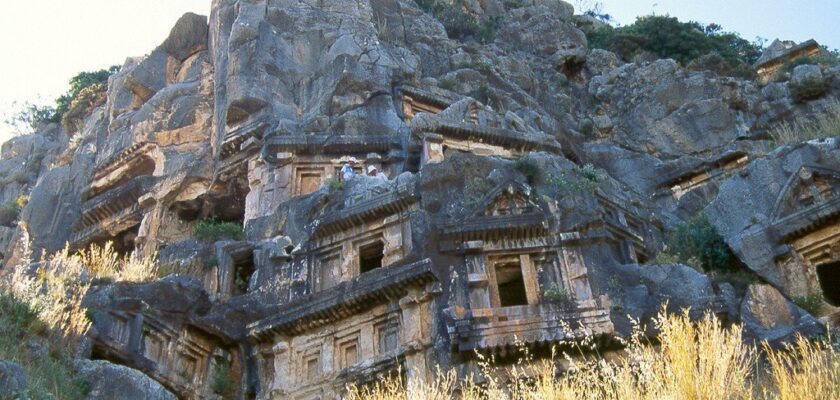Lycian Tombs of Myra (Likya kaya mezarları)
Lycian Tombs of Myra is a unique ancient necropolis built in ancient Myra, the ruins of which are located on the outskirts of the Turkish city of Demre. The Lycian Tombs are one of the oldest forms of funerary structures in the world. Burials on the mountainside began to be created in the 4th century BC. Building a necropolis in the rocky ground required a lot of time and effort, so only the richest and most famous citizens of the city were buried here. Almost every tomb consists of two rooms, and inside it there is a sarcophagus. Remarkably, all the tombs are connected by stone staircases.
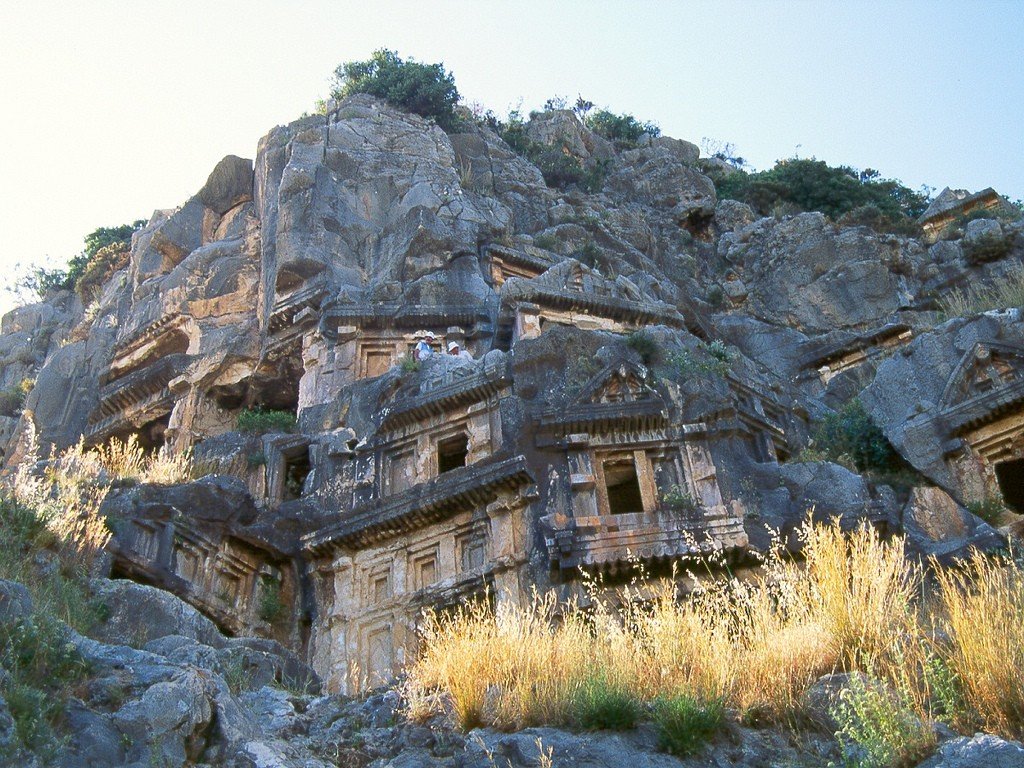
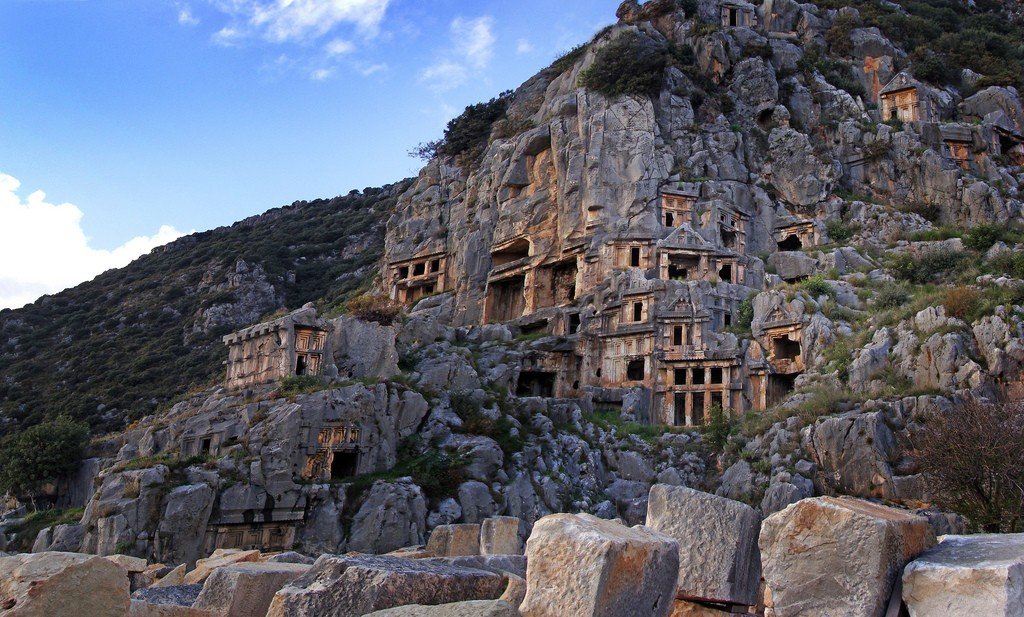
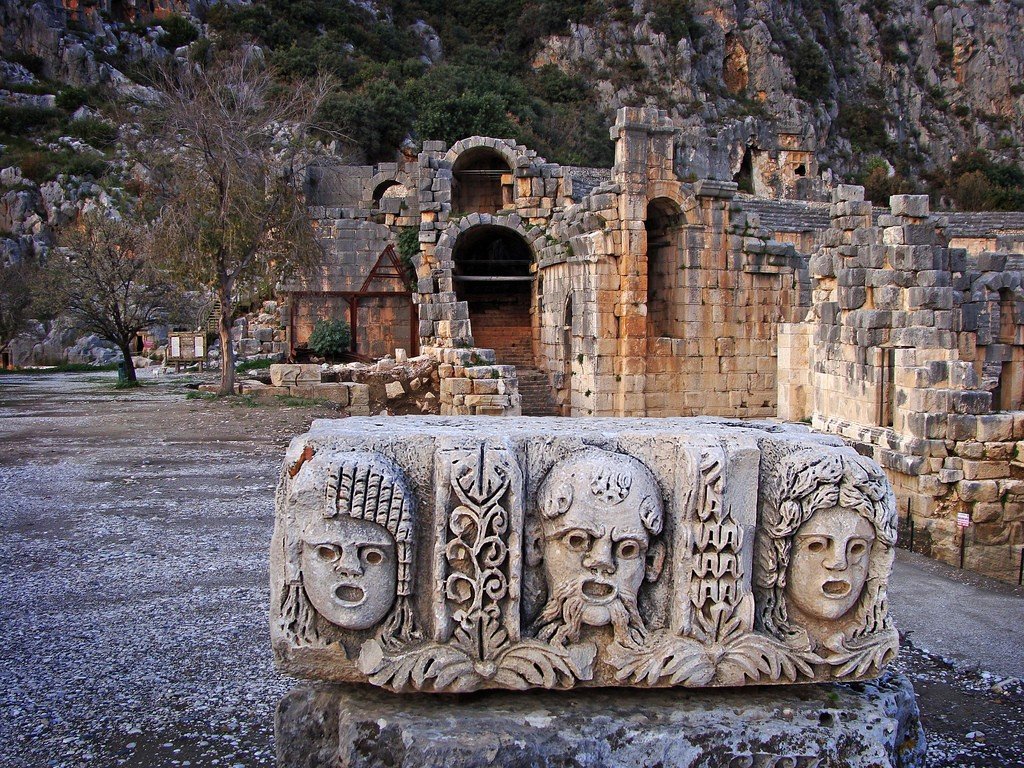
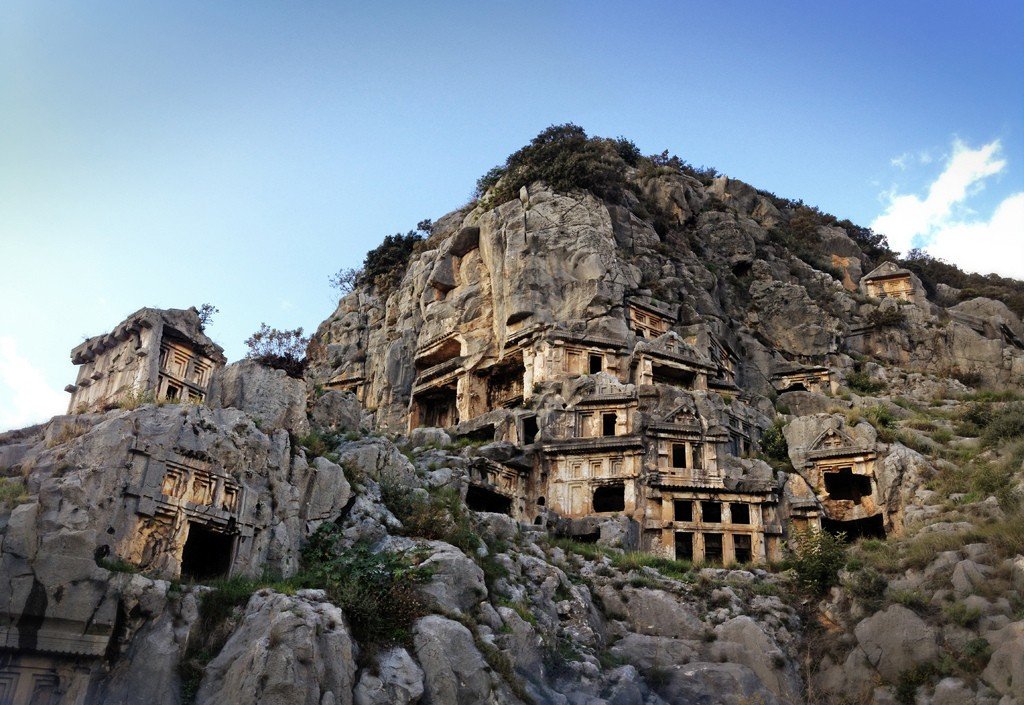
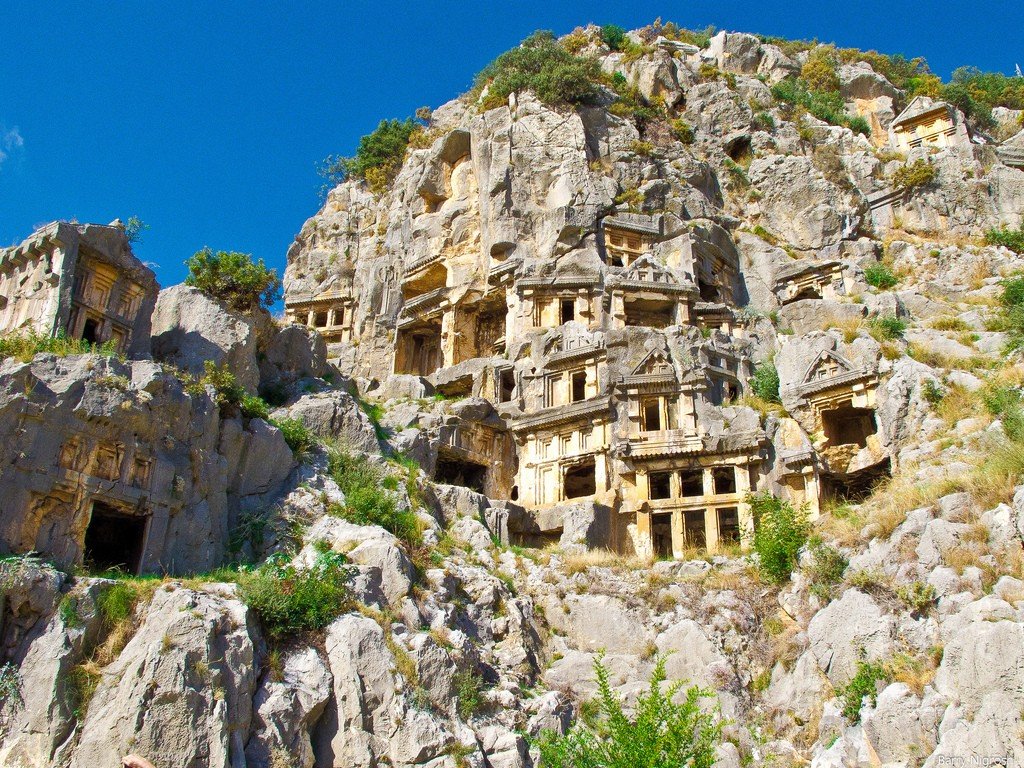
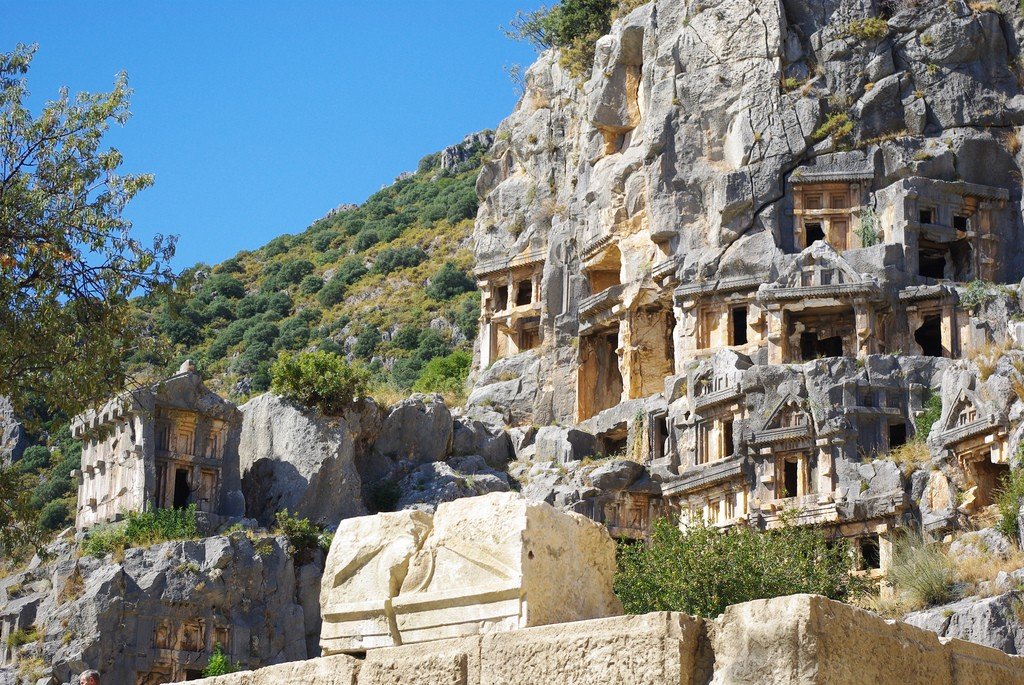
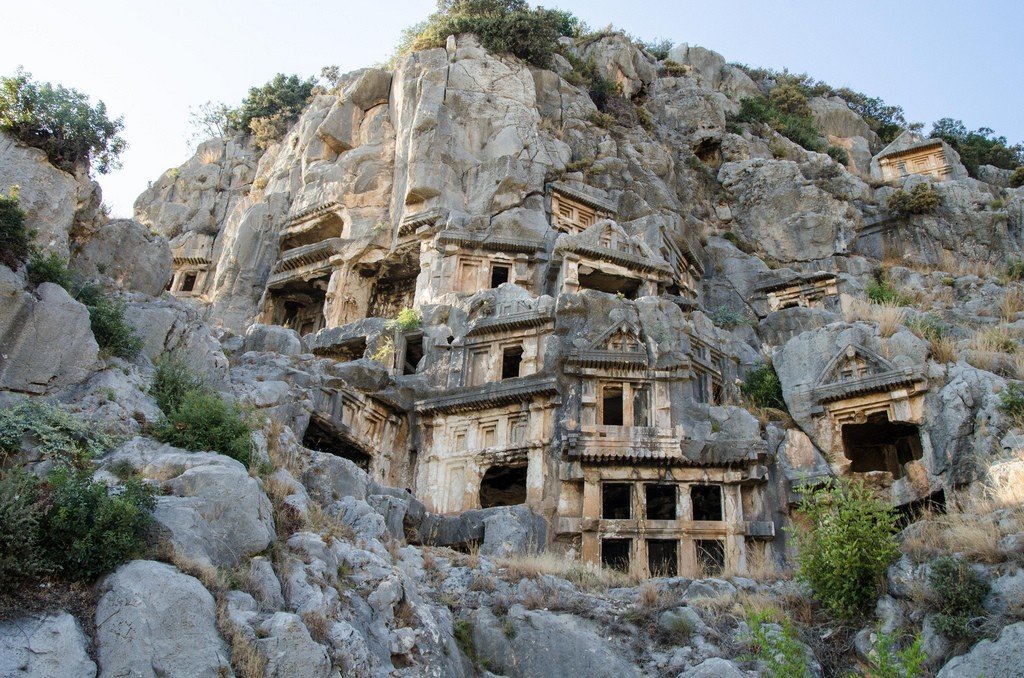
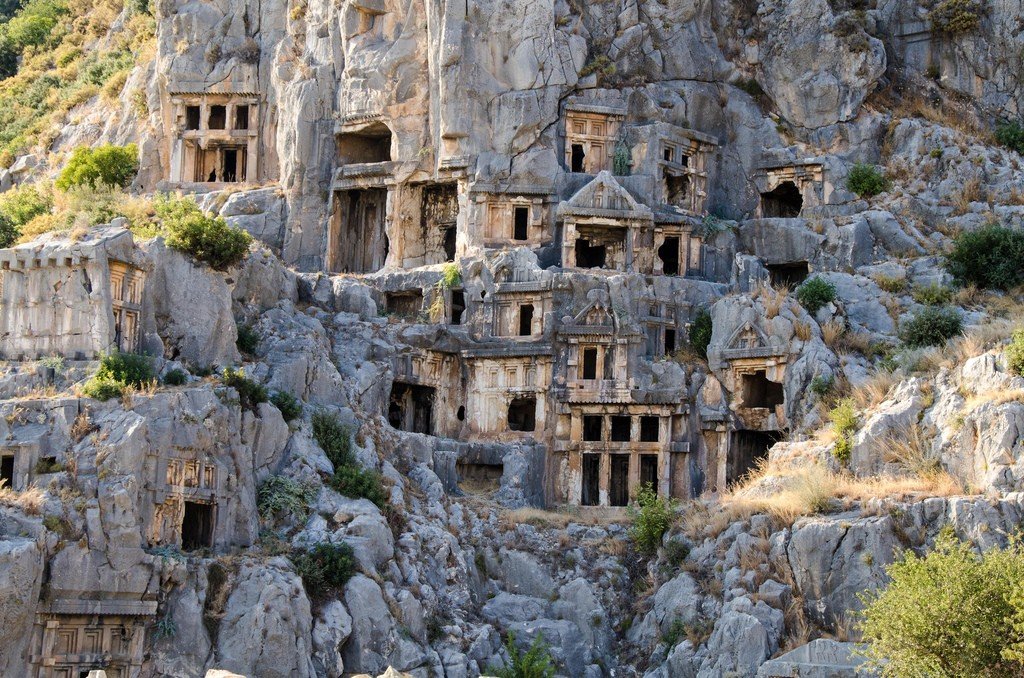
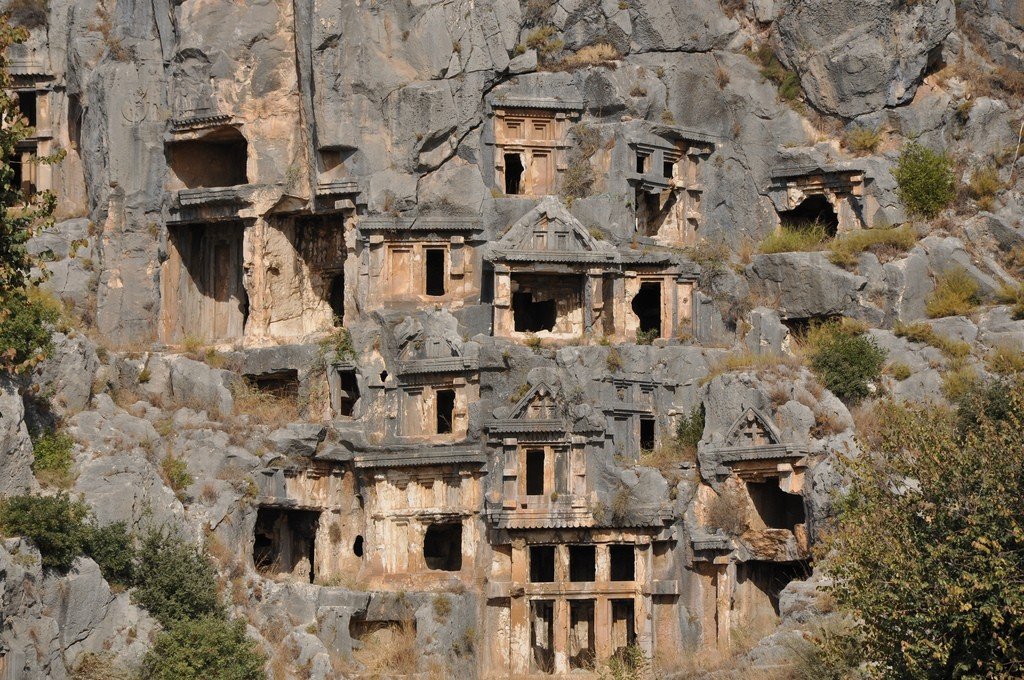
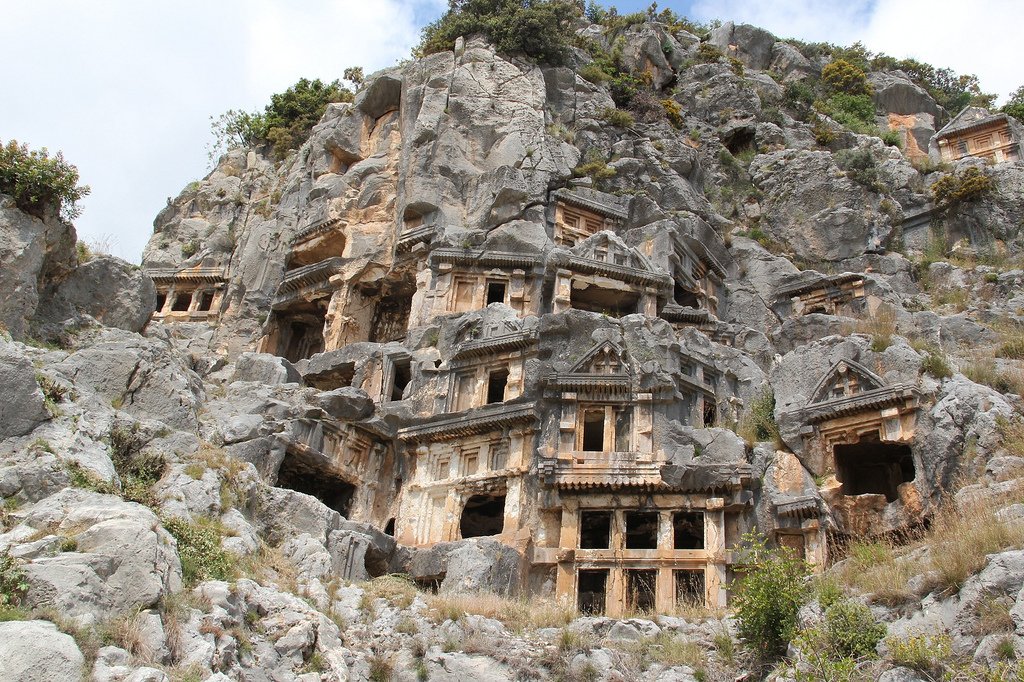
Video: Lycian Tombs of Myra
Highlights
According to Lycian beliefs, after death, people’s souls were transformed into winged creatures similar to the Sirens. The higher the burial site, the faster the soul of the deceased would go to heaven. This is why the necropolis was built above the city, on a rocky cliff.
.The Lycian tombs of Myra were carved in rock, and no other building materials were used for the necropolis. The facades of the tombs were made to resemble houses or temples. On them one can see the likeness of pylons, columns, carved doors and relief images. Some tombs are decorated with a double-pitched roof cut into the rock.
.
Beneath the rock necropolis is a Greco-Roman theater. The Lycian Tombs of Myra are open daily for visitors: from April to October from 9.00 a.m. to 7.00 p.m., from November to March from 9.00 a.m. to 5.00 p.m.
.City of Mira
The ancient city of Mira, whose ruins are located just 2 km from the center of modern Demre, was founded in the 5th century BC. Two centuries later, this city became the capital of ancient Lycia. According to legend, in the year 60 the Apostle Paul, a companion of Christ, visited here and brought the Christian faith to this land. In the Byzantine era, Mira was a major religious center and flourished for several centuries.
.
In the 8th century, a major flood occurred. The water filled with silt and mud the bed of the river Miros, which flowed through the city. The inhabitants could no longer go down the river to the Mediterranean Sea, so they moved the city to where the neighborhoods of modern Demre are now.
.
Gradually Mira lost its former power, but it remained a place of Christian pilgrimage, and especially many believers came to worship the Lycian tombs. Nowadays, Demre is a major tourist center that brings together several coastal settlements.
.How to get there
The Lycian Tombs of Myra are located in the northern part of the city of Demre, near Karabucak Street, 4.5 km from the shore of the Mediterranean Sea. It can be reached from Antalya International Airport by rented car or cab.
.
